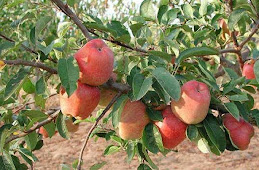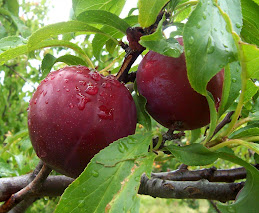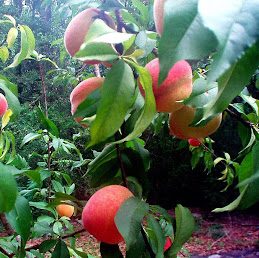MY PAPER, WEDNESDAY, DECEMBER 28, 2011, PAGE A12, World
From http://epaper.mypaper.sg/cnd/fvxen/fvxp/fvxpress.php?param=2011-12-28
By New York Times, NYT
Source Website: http://www.nytimes.com/2011/12/27/health/high-sodium-to-potassium-ratio-in-diet-is-a-major-heart-risk.html
"Sodium-Saturated Diet Is a Threat for All"
By JANE E. BRODY, Published: December 26, 2011
 PHOTO: "Sodium-Saturated Diet Is a Threat for All"
PHOTO: "Sodium-Saturated Diet Is a Threat for All"
By Yvetta Fedorova, Copyright 2011 The New York Times Company, December 27, 2011
http://graphics8.nytimes.com/images/2011/12/27/science/27BROD/27BROD-popup.jpg
http://www.nytimes.com/2011/12/27/health/high-sodium-to-potassium-ratio-in-diet-is-a-major-heart-risk.html
Maybe you think you don’t have to worry about salt. After all, you don’t have high blood pressure, you’re not overweight and you exercise regularly.
Well, think again. A major study, based on data from more than 12,000 American adults, took into account all those risk factors for death from heart disease. The researchers found that while a diet high in sodium — salt is the main source — increases your risk, even more important is the ratio of sodium (harmful) to potassium (protective) in one’s diet.

PHOTO: Fish and chips wouldn't be the same without it: But now scientists say the yearning for salt stimulates the brain like addiction to hard drugs
http://i.dailymail.co.uk/i/pix/2011/07/12/article-0-03D80A5F000005DC-583_468x415.jpg
http://www.dailymail.co.uk/health/article-2013703/Why-salt-addictive-It-stimulates-brain-cells-just-like-cigarettes-hard-drugs.html#ixzz1i8vE3B9G
When people whose meals contained little sodium relative to potassium were compared with those whose diets had a high sodium-to-potassium ratio, the latter were nearly 50 percent more likely to die from any cause and more than twice as likely to die from ischemic heart disease during a follow-up period averaging 14.8 years.
Although there has been on-and-off controversy about the value of limiting dietary salt, there is no question that a high level of sodium in the diet raises blood pressure and the risk of chronic hypertension by stiffening arteries and blocking nitric oxide, which relaxes arteries. Hypertension, in turn, contributes to heart disease and stroke, leading causes of death.

PHOTO: A high level of sodium in the diet raises blood pressure and the risk of chronic hypertension
http://www.healthytimesblog.com/wp-content/uploads/2011/05/Healthy-Heart.jpg
http://www.healthytimesblog.com/2011/05/lower-your-blood-pressure-naturally-1/
Potassium, on the other hand, activates nitric oxide and thus reduces pressure in the arteries, lowering the risk of hypertension.
“We controlled for all the major cardiovascular risk factors and still found an association between the sodium-potassium ratio and deaths from heart disease,” said Dr. Elena V. Kuklina, a nutritional epidemiologist at the Centers for Disease Control and Prevention and an author of the study, published earlier this year in Archives of Internal Medicine.
“With age, the risk of high blood pressure increases. The lifetime risk in this country is 90 percent. If you live long enough, you’re at risk.”
According to an Institute of Medicine report on sodium released last year, “No one is immune to the adverse health effects of excessive sodium intake.”

PHOTO: The body’s requirement for sodium is very low — only 220 milligrams a day — but the average American consumes more than 3,400 milligrams daily.
https://blogger.googleusercontent.com/img/b/R29vZ2xl/AVvXsEgK4qRpqeV2wPdqID6NDBxqXSZjU9CJvH1GMuz7eEfl5nrYDZRIaGIugVoal_tIUPhP-dsvn6HqFWMTvVLCctyyl2zX8XD9GhZ43HVQVVPlOYnJGU6L5pjqCg2Bq158QNn8e9MfHI6K7Uw/s1600/Salt+photo.jpg
http://amveruscg.blogspot.com/2011/12/what-were-reading.html
Our High-Salt Diet
Ninety percent of the sodium in the American diet comes from salt, three-fourths of which is consumed in processed and restaurant foods. Salt added in home cooking and at the table accounts for only a minor proportion of sodium intake.
The body’s requirement for sodium is very low — only 220 milligrams a day — but the average American consumes more than 3,400 milligrams daily. The current Dietary Guidelines for Americans recommend a maximum of 2,300 milligrams (about a teaspoon of salt) for people over age 2, but only 1,500 milligrams for the 70 percent of adults at high risk of sodium-induced illness: people older than 50, all African-Americans, and everyone with high blood pressure, diabetes or chronic kidney disease.
Despite widespread efforts to get people to consume less sodium, intake of this nutrient has increased significantly since the early 1970s as consumption has risen of processed and restaurant foods, which rely heavily on salt as a cheap way to enhance flavor and texture and preserve food. Because salt is categorized by the Food and Drug Administration as G.R.A.S., or “generally recognized as safe,” there is no limit to the amount food producers can use in a product.
To make matters worse, not only does the amount of sodium rise precipitously when foods like tomatoes and potatoes are processed, but the natural potassium in these foods declines significantly, worsening the sodium-potassium ratio.
The profligate use of salt in foods prepared outside the home has created an American preference for a salty taste, a preference that can be reversed with no loss of consumer pleasure if done slowly, said Dr. Thomas A.Farley, commissioner of New York City’s Department of Health and Mental Hygiene.
His department is leading a national effort started in 2008 to get food producers and restaurants to gradually reduce the salt in their products. Thus far, 28 national food companies, retailers and supermarket chains, including Kraft, Subway, Target and Delhaize America, have made a commitment to the National Salt Reduction Initiative to cut sodium in their products by an average of 25 percent by 2014.
But Dr. Jane E. Henney, chairwoman of the committee that produced the Institute of Medicine report, said this is still just a voluntary effort, and to make a lasting nationwide difference in sodium intake, the government needs to push harder for change. The report said, “What is needed is a coordinated effort to reduce sodium in foods across the board by manufacturers and restaurants — that is, create a level playing field for the food industry.”
Dr. Henney, a public health specialist at the University of Cincinnati College of Medicine, said it is time to modify the G.R.A.S. status of salt because it can no longer be considered safe under current conditions of use.
This would allow the Food and Drug Administration to place limits on the amounts of salt that can be used commercially in preparing various types of foods.
The report stated that “population-wide reductions in sodium could prevent more than 100,000 deaths annually.”
It can be done, if there is a will. Through decades of voluntary efforts and regulation, Finland managed to cut sodium intake by one-third, which has resulted in a decrease in hypertension and premature deaths from stroke and coronary heart disease.

PHOTO: Eating more of these good-for-you foods may help you be happier and healthier.
http://images.agoramedia.com/everydayhealth/gcms/eat-to-defeat-menopause-08-pg-full.jpg
http://www.everydayhealth.com/menopause-pictures/eat-to-defeat-menopause-symptoms.aspx#/slide-1
What You Can Do
Dr. Kuklina recommends eating fewer processed foods, especially processed meats, and more fresh fruits and vegetables and dairy products that are low in sodium, like yogurt and milk. Increase your potassium intake not by taking supplements, but by eating more cantaloupe, bananas, oranges, grapes, grapefruit, blackberries, yogurt, dried beans, leafy greens, potatoes and sweet potatoes.

PHOTO: Cantaloupe ("Rockmelon") - A small, round melon of a variety with orange flesh and ribbed skin. Make sure it is firm on the outside and has a yellow toned skin.
http://www.asklubo.com/uploads/attachments/published/8/1089/en/cantaloupe-melon.jpg
http://www.asklubo.com/en/food-drinks/how-to-avoid-buying-rotten-cantaloupe
 PHOTO: Bye, Bye Sodium, Hello Potassium
PHOTO: Bye, Bye Sodium, Hello Potassium
Yes, You cut out that sodium, but most people aren’t aware of the benefits of potassium, which counters sodium’s ill effects. According to the 2010 Dietary Guidelines for Americans, people with hypertension may especially benefit from upping the amount of potassium in their diet. Adults should get at least 4,700 milligrams a day. A few good sources: bananas (422 milligrams each), a baked potato with skin (738 milligrams), orange
juice (496 milligrams per cup), and nonfat or low-fat yogurt (531–579 milligrams per 8 oz).
http://www.healthytimesblog.com/wp-content/uploads/2011/05/Potassium-rich-foods.gif
http://www.healthytimesblog.com/2011/05/lower-your-blood-pressure-naturally-1/
When ordering in a restaurant, she suggests, ask that your food be prepared without added salt and your vegetables steamed, and always request that salad dressings and sauces be served on the side, enabling you to use far less than the chef might. Consider splitting an order between two people, which would cut the salt intake in half. And if a dish arrives that is too salty, send it back to the kitchen.
Avoid fast-food restaurants, where a single meal can contain a day’s worth of sodium.

PHOTO: Dr. Kuklina recommends eating fewer processed foods, and more fresh fruits
http://healthylifestylealternatives.com/wp-content/uploads/2010/09/Healthy-Eating-Shortcuts_full_article_vertical.gif
http://healthylifestylealternatives.com/archives/1080
When shopping, Dr. Farley said, “read labels and compare products, then choose those with lower sodium.”
He acknowledged that products labeled “low sodium” or “no added salt” can turn off consumers, who think they’ll be tasteless. But you can always add a modest amount of salt at the table.
He also suggested asking food companies to use less salt in your favorite products and supporting the government’s efforts to reduce sodium consumption by commenting on a proposal published on Sept. 15 in the Federal Register (Docket No. FDA-2011-N-0400 and Docket No. FSIS-2011-0014). The easiest way to comment is through the American Heart Association’s Web site: www.heart.org/sodium, then click on “Send your comment letter today.”
 PHOTO: Foods High in Potassium
PHOTO: Foods High in Potassium
Though a lot of people associate bananas with potassium, there are a number of other foods that are high in potassium, which Schmitt defines as having at least 350 milligrams of potassium per serving.
In addition to bananas, Schmitt’s high-potassium food favorites include dried apricots, cantaloupe, beets, figs, honeydew melon, and orange juice. “Cantaloupe and honeydew are great [for potassium] because people tend to eat more cantaloupe in one sitting than they would bananas or dried apricots,” she says. Other foods that are high in potassium include potatoes (with the skin on), soy products, dairy products, and meats.
http://www.cuisineonline.pk/wp-content/uploads/2011/01/Diet-Meal-Plan.jpg
http://www.cuisineonline.pk/diet/potassium-and-diet/
HELPDESK
我的字典: Wǒ de zì diǎn
Nitric oxide: 一氧化氮 - yī yǎng huà dàn
Sodium intake: 钠盐摄入量 - nà yán shè rù liàng
Processed foods: 加工食品 - jiā gōng shí pǐn
Supplements: 补充品 - chōng pǐn
 PHOTO: Cantaloupe Sandals by `ursulav
PHOTO: Cantaloupe Sandals by `ursulav
Traditional Art / Paintings / Surreal, ©2007-2011 `ursulav
A series of shoes grown to Finchbones's specifications by teams of underpaid but fanatical gardeners.
http://fc05.deviantart.net/fs14/f/2007/008/f/3/Cantaloupe_Sandals_by_ursulav.jpg
http://ursulav.deviantart.com/art/Cantaloupe-Sandals-46235926
Reference













































.jpg)
.gif)
.jpg)
























































